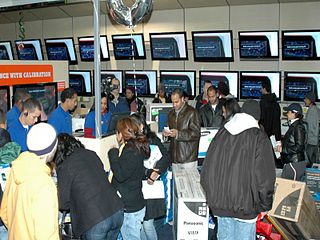
Consumer electronics or home electronics are electronic equipment intended for everyday use, typically in private homes. Consumer electronics include devices used for entertainment, communications and recreation. Usually referred to as black goods due to many products being housed in black or dark casings. This term is used to distinguish them from "white goods" which are meant for housekeeping tasks, such as washing machines and refrigerators, although nowadays, these would be considered black goods, some of these being connected to the Internet. In British English, they are often called brown goods by producers and sellers. In the 2010s, this distinction is absent in large big box consumer electronics stores, which sell entertainment, communication and home office devices, light fixtures and appliances, including the bathroom type.
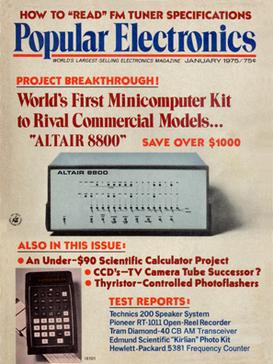
Popular Electronics was an American magazine published by John August Media, LLC, and hosted at TechnicaCuriosa.com. The magazine was started by Ziff-Davis Publishing Company in October 1954 for electronics hobbyists and experimenters. It soon became the "World's Largest-Selling Electronics Magazine". In April 1957, Ziff-Davis reported an average net paid circulation of 240,151 copies. Popular Electronics was published until October 1982 when, in November 1982, Ziff-Davis launched a successor magazine, Computers & Electronics. During its last year of publication by Ziff-Davis, Popular Electronics reported an average monthly circulation of 409,344 copies. The title was sold to Gernsback Publications, and their Hands-On Electronics magazine was renamed to Popular Electronics in February 1989, and published until December 1999. The Popular Electronics trademark was then acquired by John August Media, who revived the magazine, the digital edition of which is hosted at TechnicaCuriosa.com, along with sister titles, Mechanix Illustrated and Popular Astronomy.
Dick Smith Electronics Holdings Limited was an Australian chain of retail stores that sold consumer electronics goods, hobbyist electronic components, and electronic project kits. The chain expanded successfully into New Zealand and unsuccessfully into several other countries. The company was founded in Sydney in 1968 by Dick Smith and owned by him and his wife until they sold 60% to Woolworths in 1980, and the remaining 40% two years later.
Capitol Technology University is a private university in South Laurel, Maryland near Washington, DC. The university was founded in 1927 as the Capitol Radio Engineering Institute by a former US Navy Radioman. CREI changed its name to Capitol Institute of Technology in 1964, changed its name again to Capitol College in 1987, and assumed its present name in 2014. Capitol offers undergraduate and graduate programs specializing in engineering, computer science, information technology, and business. It is classified among "Special Focus Institutions—Schools of Engineering" and is a National Center of Academic Excellence in Information Assurance Education.
A vocational-technical school, often called a vo-tech school, is a high school in the United States and Canada designed to bring vocational and technical training to its students. Proponents claim that students bound for college may be able to use such skills to realize a distinct educational advantage over other students in their major.

Rayat Bahra Group of Institutions Patiala is private college affiliated to Maharaja Ranjit Singh Punjab Technical University,Bathinda, offering engineering courses at undergraduate and Post Graduate level, leading to B.Tech., M.Tech, and B.Pharmacy degrees. Also offers Law Study under the banner of Punjabi University Patiala campus.
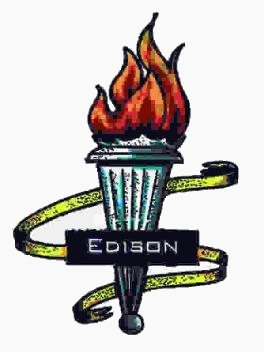
Thomas A. Edison Career and Technical Education High School is a public secondary school in Queens's Jamaica Hills community in New York City. It is one of the few public high schools in New York City to offer vocational training programs as well as traditional college preparatory tracks and well known for its largely male population. The school is operated by the New York City Department of Education.

Don Bosco Technical College, also referred to by its acronym DBTC, Don Bosco Mandaluyong or informally DB Manda, is a private Catholic basic and higher education institution run by the Salesians of the Society of Saint John Bosco in Mandaluyong, Metro Manila, Philippines. Established in 1953 by the Salesians, it is the first Don Bosco Educational Center in Metro Manila. Don Bosco Mandaluyong offers co-educational primary (elementary) and secondary education, co-educational senior high school and college, night school, and vocational training for out-of-school youth.

Transport and Telecommunication Institute (TTI) is the largest university-type accredited non-state technical higher educational and scientific establishment in Riga, the capital of Latvia. It was established in 1999, although it also incorporates the core of a technical and aviation school which dates back to 1919. Main directions of academic activities include electronics and telecommunications, information technology and computer science, economics, management and business administration, transport and logistics.

The National Institute of Science and Technology (NIST) was established in 1996 by a group of academicians and technocrats educated in the established institutes of India and abroad. It is promoted by SM Charitable Educational Trust under the vision and guidance of its founder chairman, Sukant K. Mahapatra, PhD, Stevens Institute of Technology, NJ, USA. The institute is approved by the All India Council for Technical Education (AICTE) and is affiliated to the BPUT. The institute campus of 70 acres is located in the Pallur Hills about 12 km from Berhampur and three hours drive from Bhubaneswar.

Robert Morgan Educational Center (RMEC) is a secondary school located at 18180 SW 122nd Avenue in Miami, Florida. As a magnet school, Robert Morgan is a juxtaposition of a vocational training and classical learning environment that is unique to other schools in its region. In April 2007, the school received regional accreditation by the Southern Association of Colleges and Schools.

Illinois Technical College was a small private junior college that specialized in teaching electronics theory and repair. The college was located in the Loop area of downtown Chicago, Illinois, United States, on Wabash Avenue. The college is no longer in operation, having closed in 1992. Records from the school are held by the Illinois State Board of Education.

The College of Engineering Perumon was started in 2000 under the Co-operative Academy of Professional Education Society. The society was formed to establish educational institutions to provide education and training, research and development, and consultancy. The society is promoted by the Co-operation Department of the government of Kerala and is an autonomous society.
Federal Institute of Science And Technology (FISAT) is a private engineering college and business school in Mookkannoor, Kerala, India, run by the Federal Bank Officers' Association Educational Society (FBOAES), established in 2002. It is an initiative of the Federal Bank Officers' Association (FBOA), the organisation representing the officers of the Federal Bank. FISAT is accredited by NBA and NAAC.
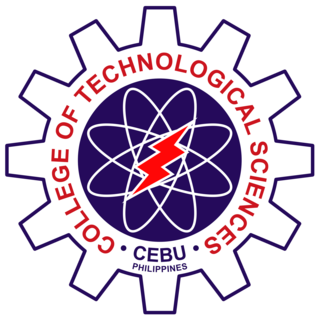
College of Technological Sciences – Cebu is a mid-sized educational institution currently located at Corner R.R. Rallos Street and N. Bacalso Avenue, Cebu City, Philippines. It is the sister school of University of Cebu.

RCC Institute of Technology(RCC) was founded as the Radio College of Canada in 1928, making it one of the oldest private technology institutions in Canada. It is also the only private educational institute in Ontario to be approved by the Ministry of Training, Colleges and Universities to grant bachelor's degrees. In 2018, Yorkville University acquired RCC Institute of Technology. It was amalgamated with Yorkville to become Yorkville University/Ontario.
Donald Glen Fink was an American electrical engineer, a pioneer in the development of radio navigation systems and television standards, vice president for research of Philco, president of the Institute of Radio Engineers, General Manager of the IEEE, and an editor of many important publications in electrical engineering.

Electronic engineering is a sub-discipline of electrical engineering which emerged in the early 20th century and is distinguished by the additional use of active components such as semiconductor devices to amplify and control electric current flow. Previously electrical engineering only used passive devices such as mechanical switches, resistors, inductors, and capacitors.

Morris N. Beitman was born in December 1911 in Cook County, Illinois. Started as an engineer with the US Army Signal Corps, he used his experience and abilities to form two career paths. He became a teacher in the Chicago public schools high school system as a radio instructor. Soon after he got into technical publishing as Supreme Publications. As publisher his goal was to support the radio and television servicing industry with easy to understand reference materials. He was married to Rose Rissman.
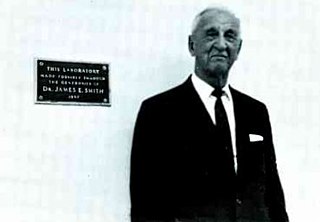
James Ernest Smith (1881–1973) was an American engineer, entrepreneur, educator, and businessman. He was the co-founder and president of the National Radio Institute (NRI) in Washington D.C., which trained 1.5 million students through home study over its 88-year history. Smith was born on February 3, 1881, in Rochester, New Hampshire. He held a bachelor's degree in electrical engineering from Worcester Polytechnic Institute (WPI) and began his career at Westinghouse Electric Corporation in Pittsburgh, but he took an extended leave of absence in 1907 to teach what remained in the term of an applied electricity course at McKinley Manual Training School for a colleague who had become ill. It went well and Smith was offered a permanent position at the school, which he accepted.



















